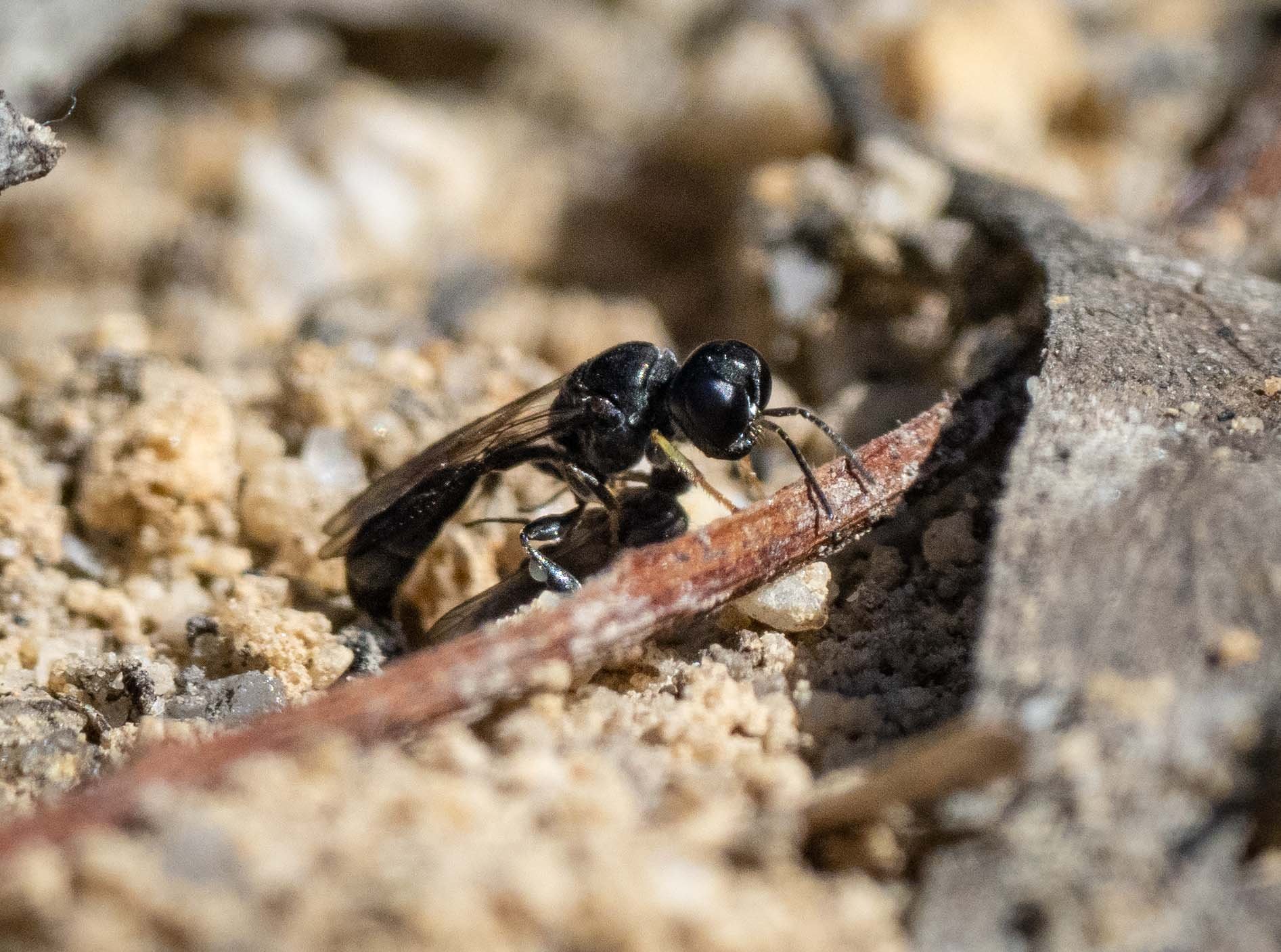
Having noticed a few insects in the area the day before, I managed my first photograph. A female wasp hauling what appears to be a fly, and soon to disappear beneath a fallen leaf.
(1st Sept 2022)

They look small, but how small are they? Estimating size in the field can be tricky. A female resting briefly on a distinctive leaf provides an opportunity.
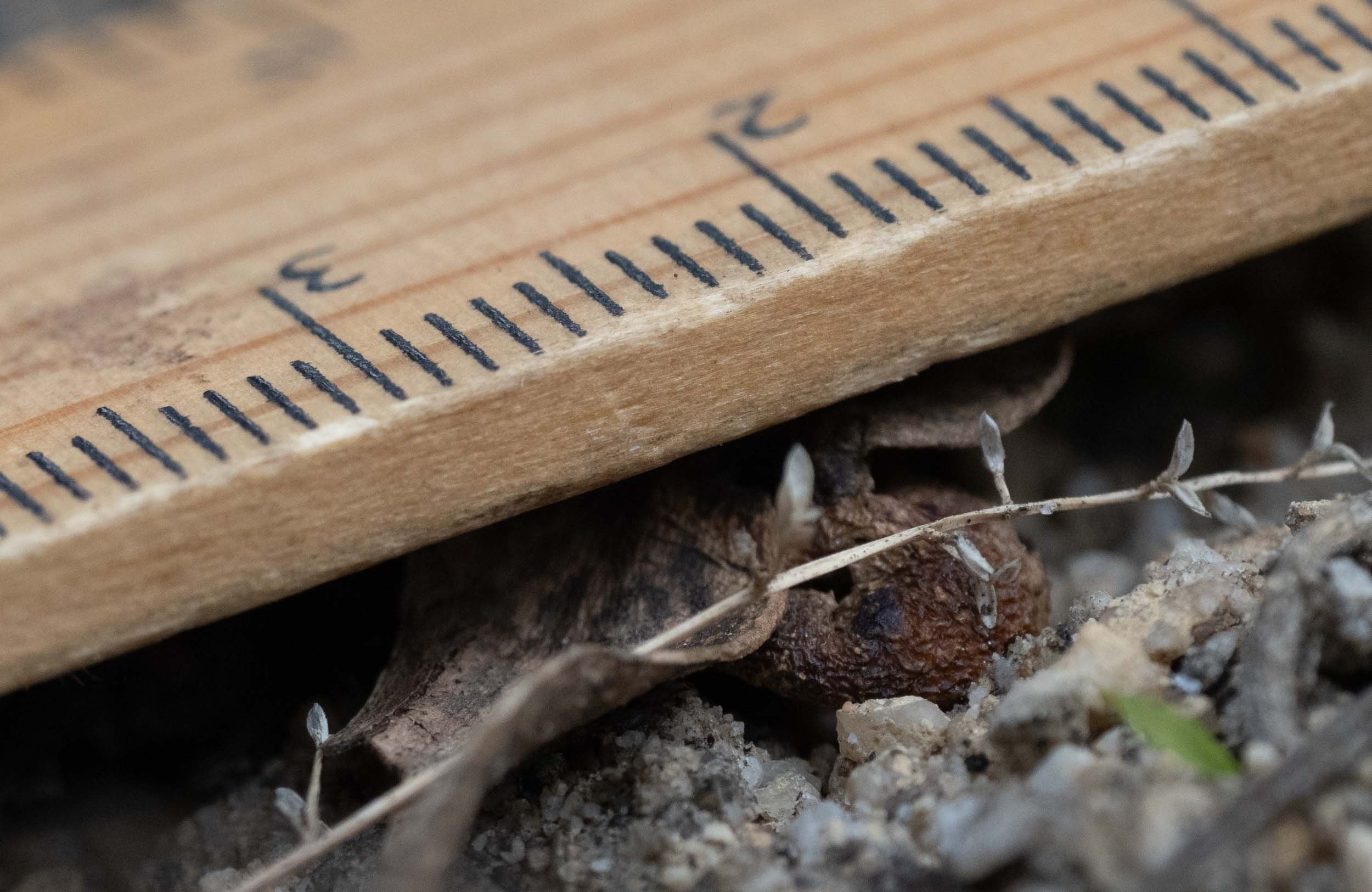
One method is to use a ruler, after the fact. Here I’ve placed it in what I hope is the right spot …
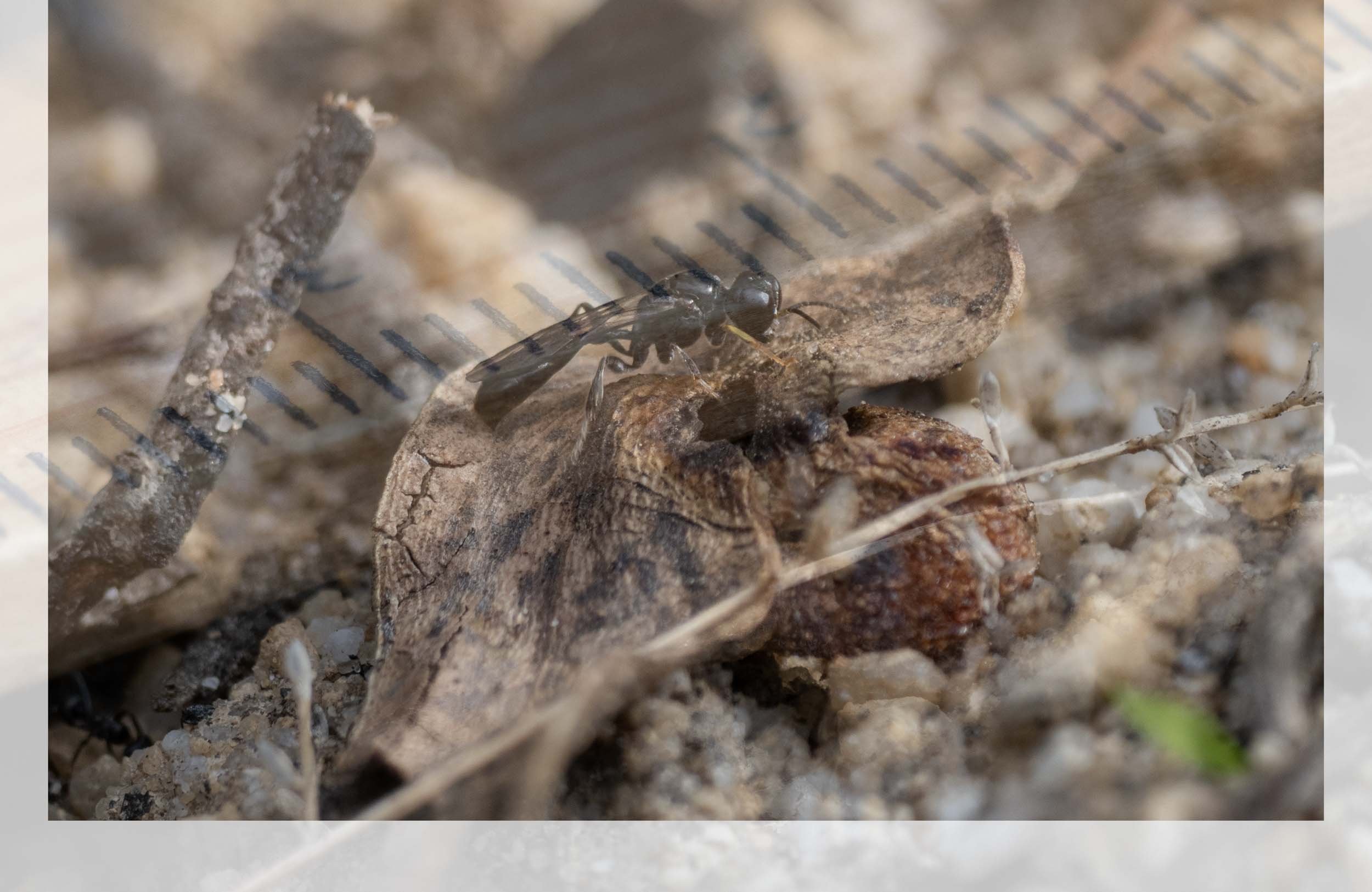
… and back at the computer I overlay the two images, aligning the background (more or less). She is roughly 7mm long.
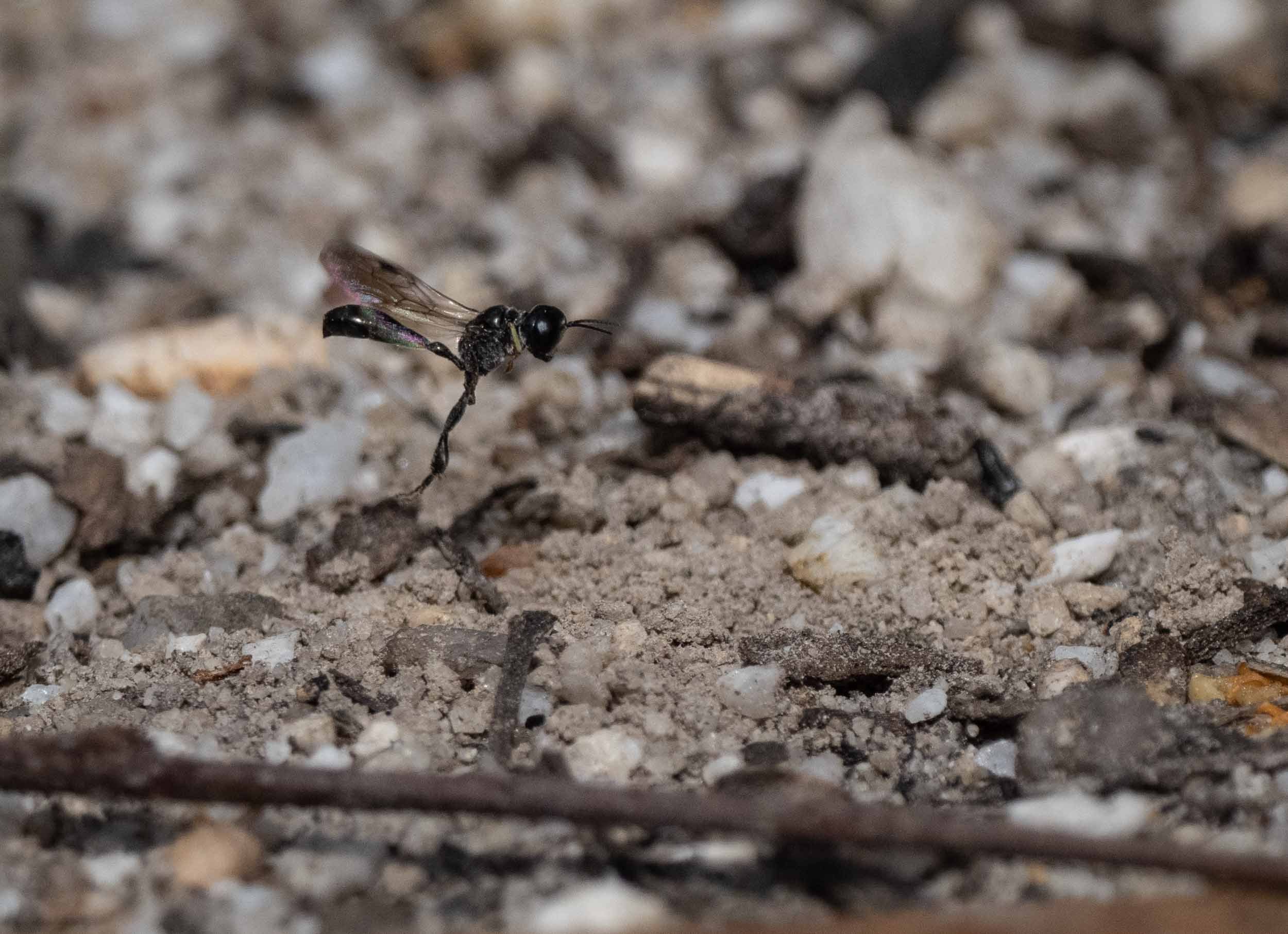
Female approaching the patch which she just started to prepare for her burrow.
(8th Sept, 2022)
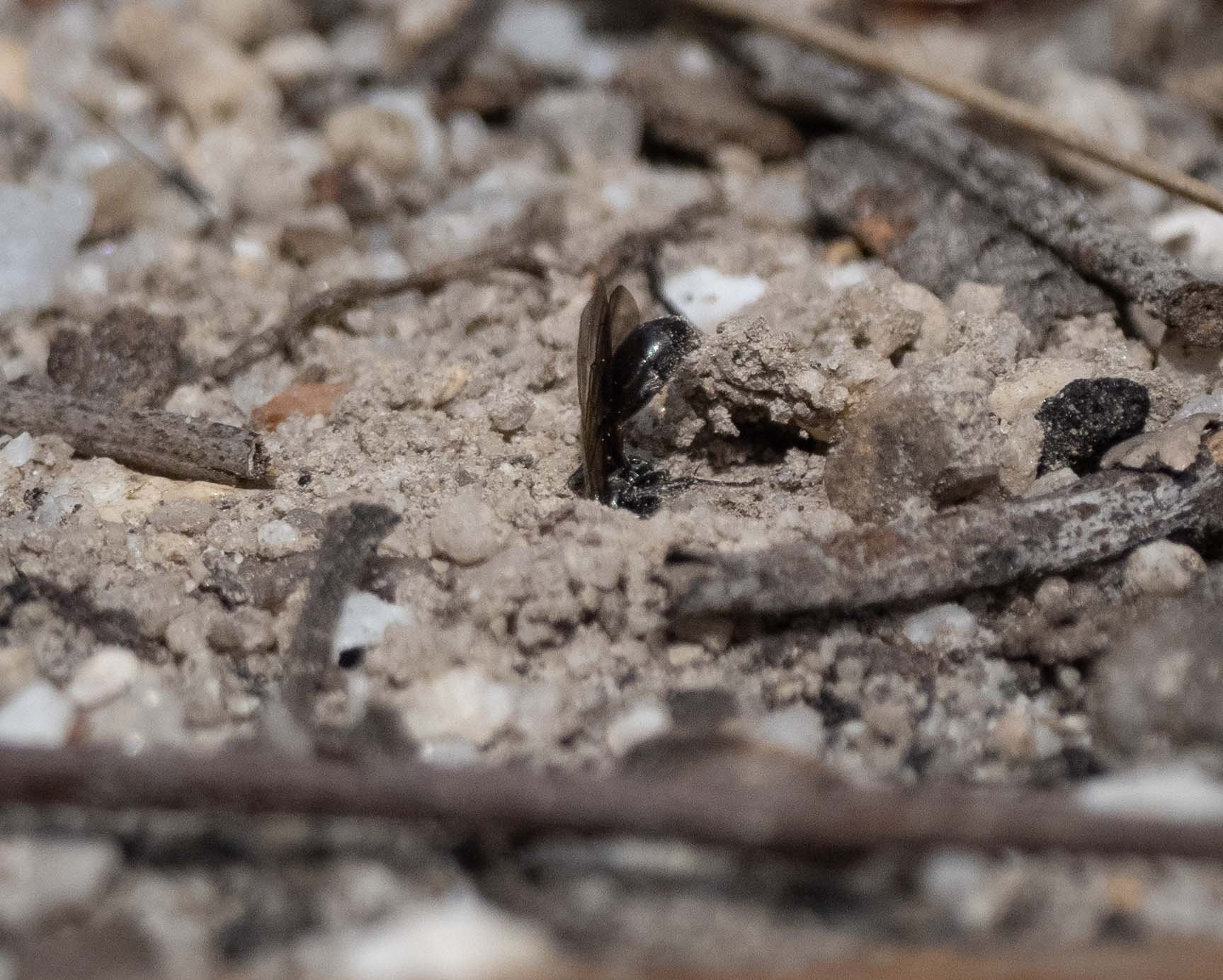
Early excavations … it takes a while!
(8th Sept, 2022)
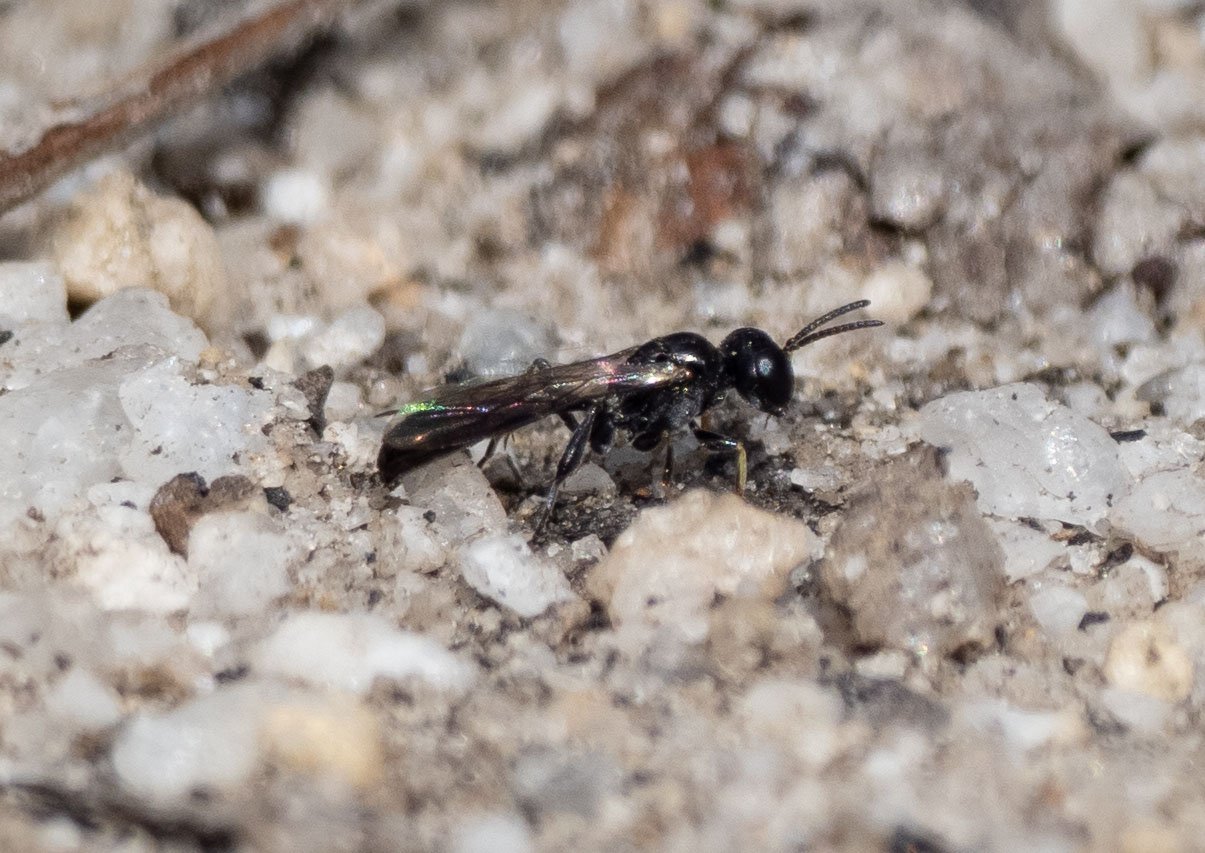
A male. The sexes are similar, but males are shorter, more slender, and have much smaller mandibles (jaws). Behaviour is the easiest way to distinguish the sexes. Males fly in looping circles with less bobbing/jinking. They don’t burrow, and they don’t carry prey. Clearly, they are simply looking to mate.
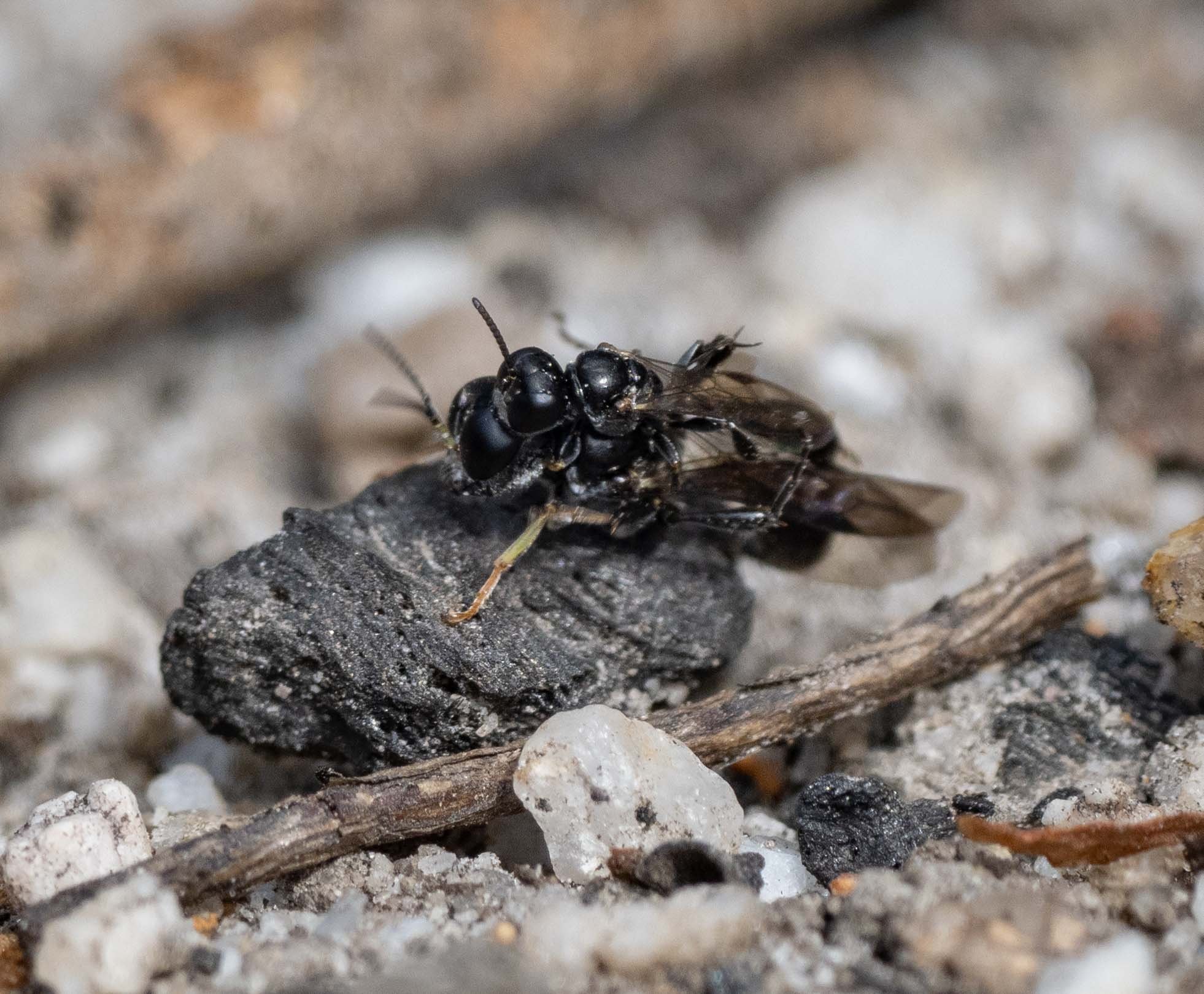
This pair had recently formed, in flight, and then landed. The male is gripping the female behind her head with his front pair of legs. She appears to be trying to dislodge him with her long, back legs.
(8th Sept, 2022)
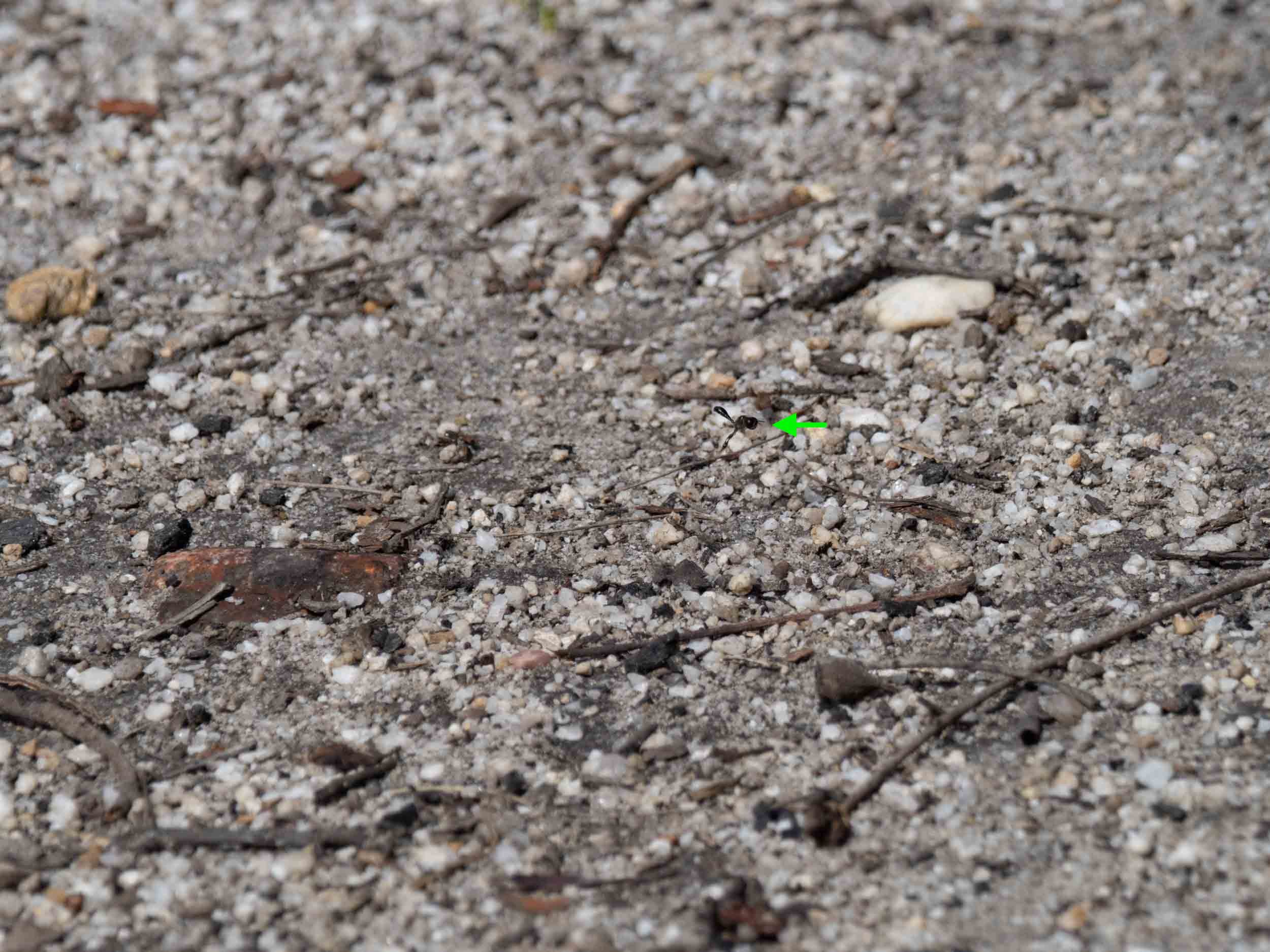
Not easy to spot until their jinking movement in flight gives them away.
(8th September, the day of the greatest aerial activity)
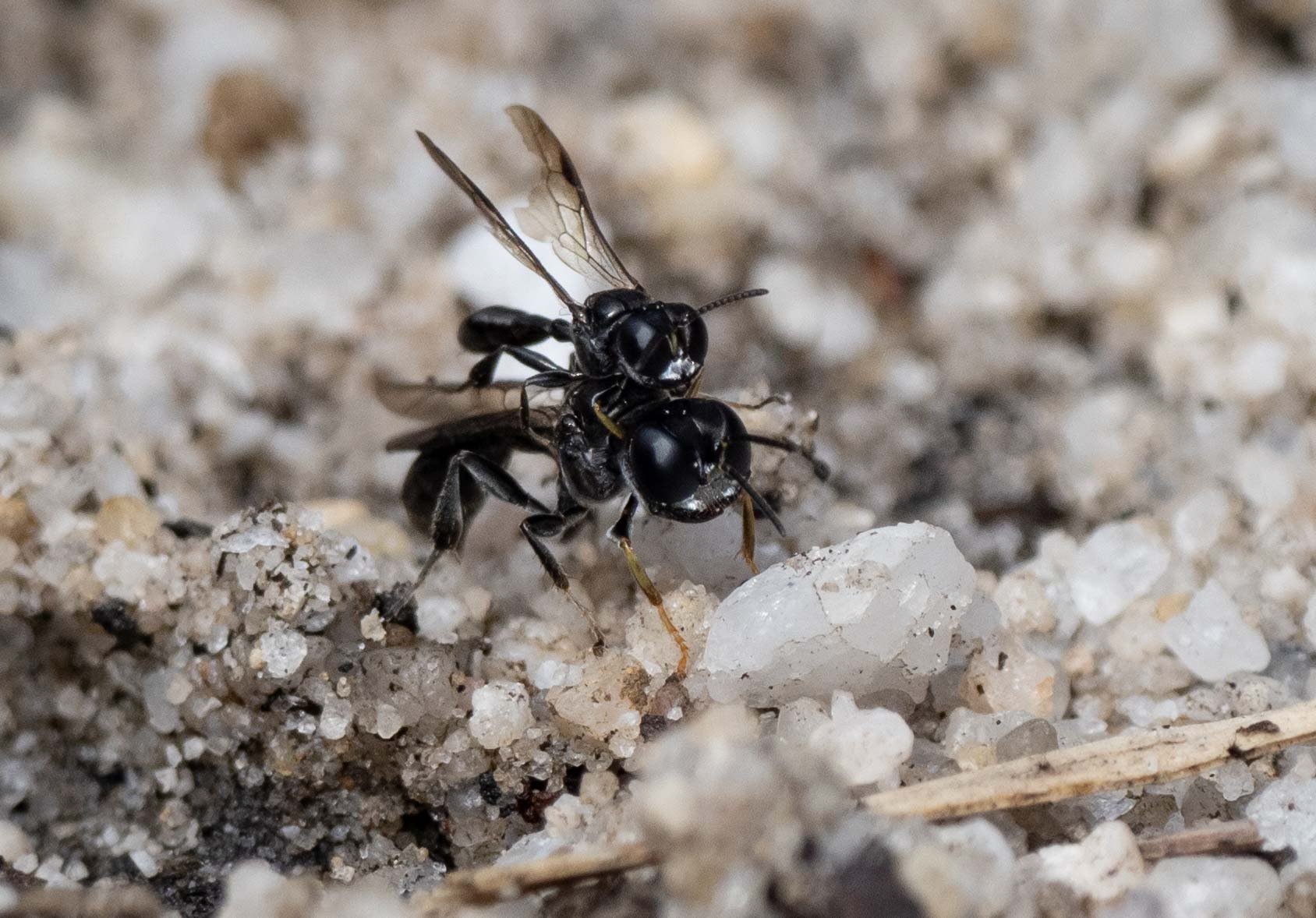
A male tightly gripping the neck and thorax of a (much larger) female.
(10th Sept, 2022)
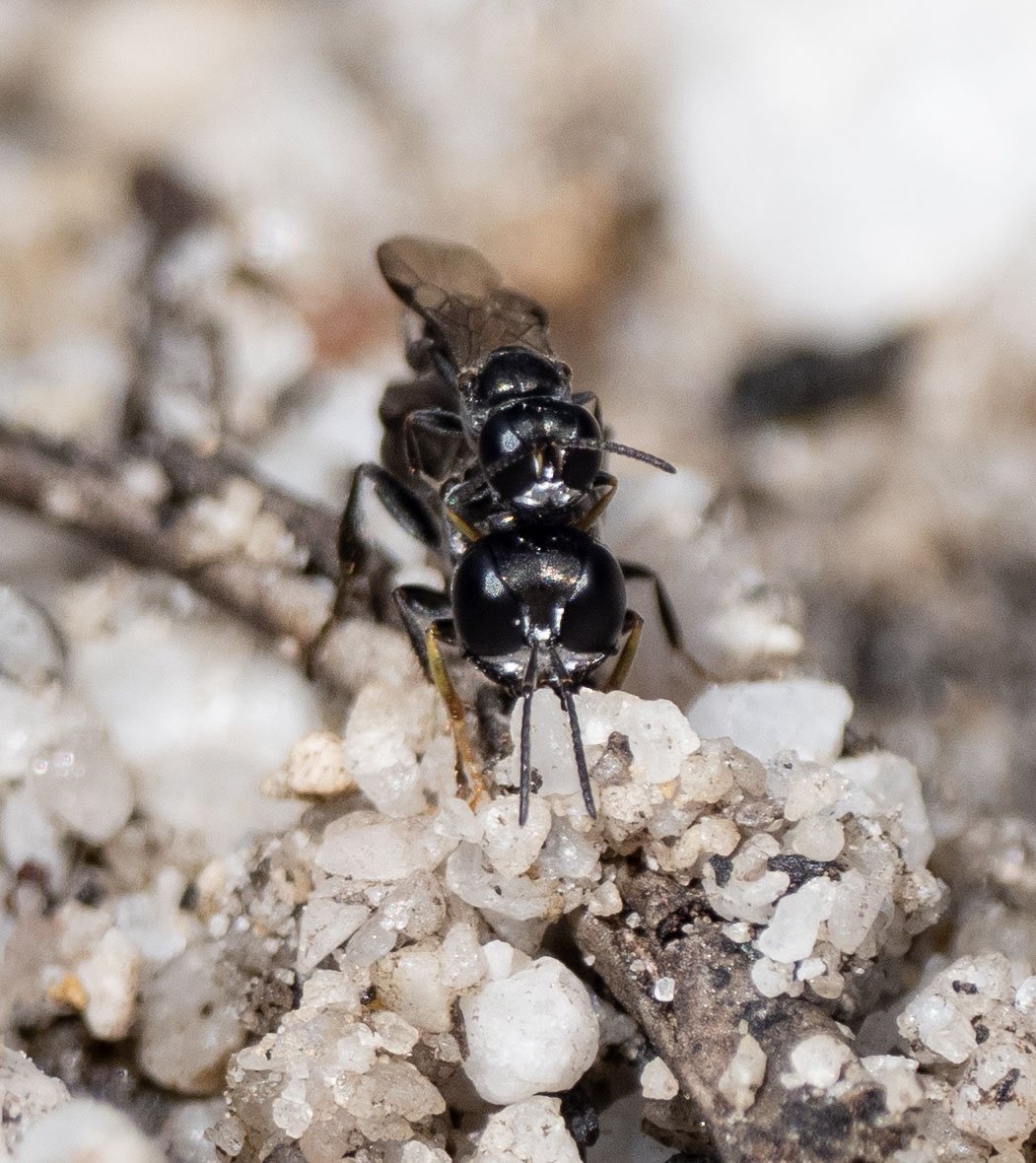
This image highlights the difference between the sexes. The female (below) is much larger, and her silvery clypeus (‘lower face’) emphasises her much wider mandibles (‘jaws’).
(10th Sept, 2022)
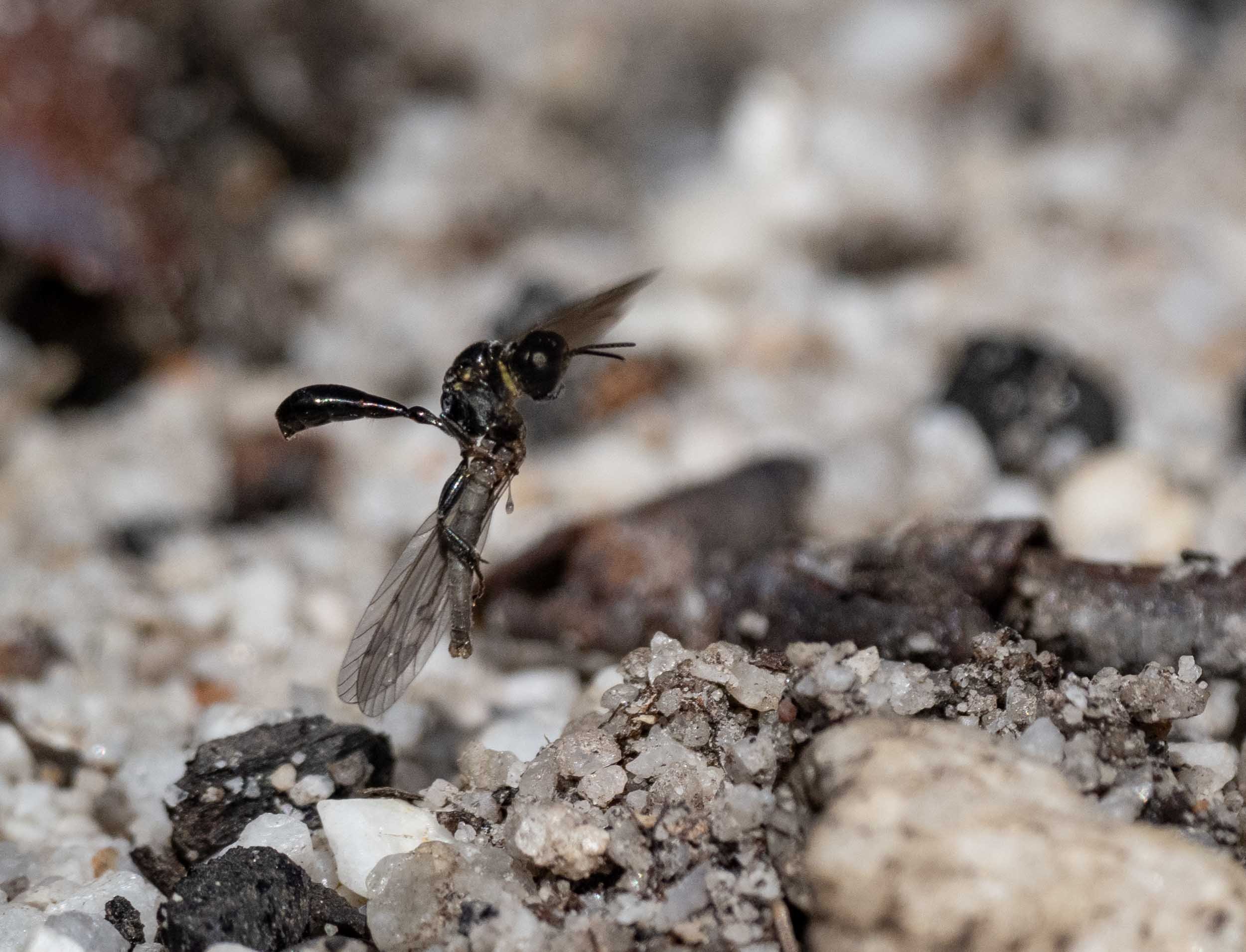
Arriving at her well-established nest mound with yet another paralysed fly.
(10th Sept, 2022 … the site is much quieter now, at least above ground)
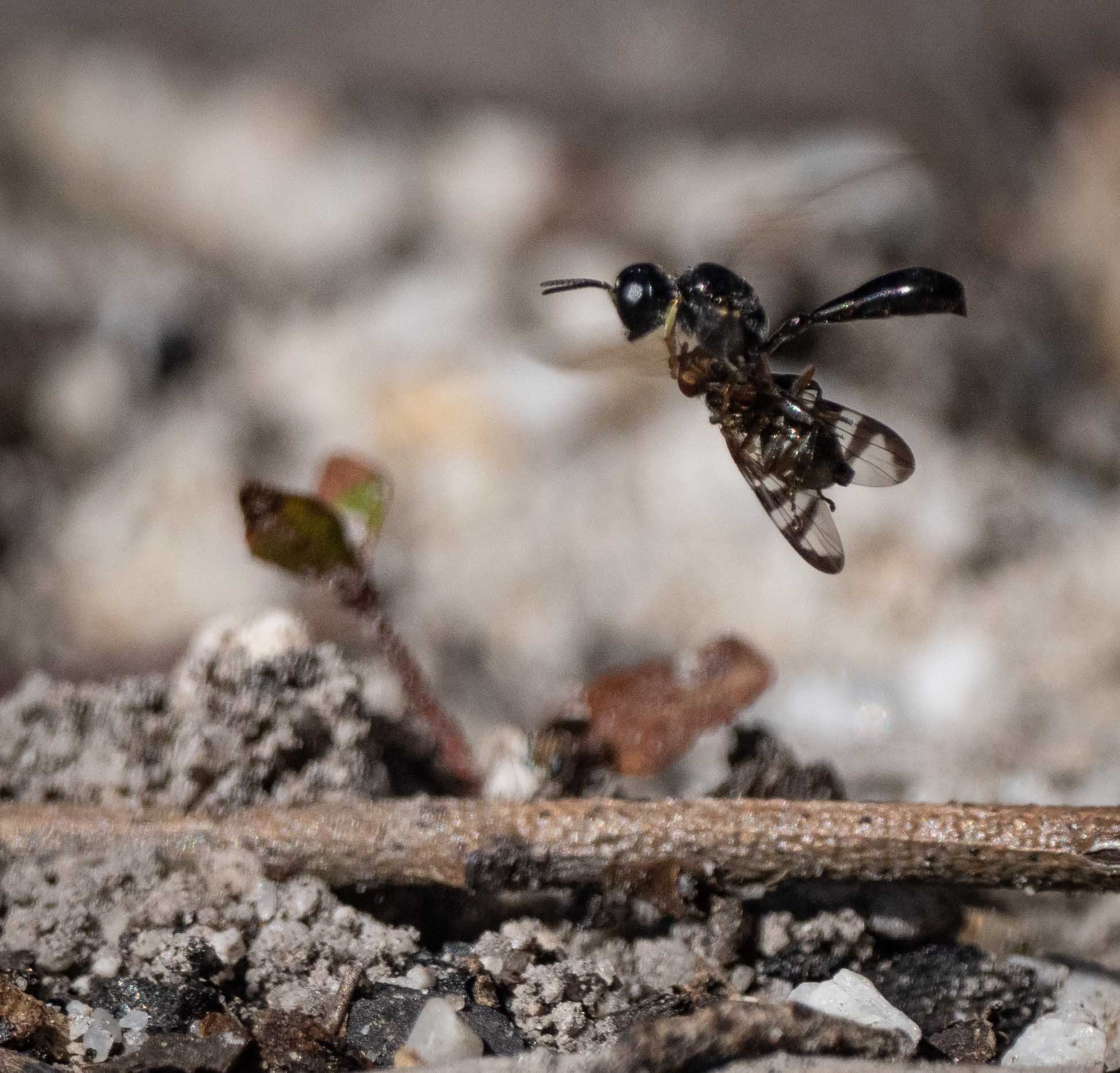
Another female, another nest, and another paralysed fly.
(11th Sept, 2022))
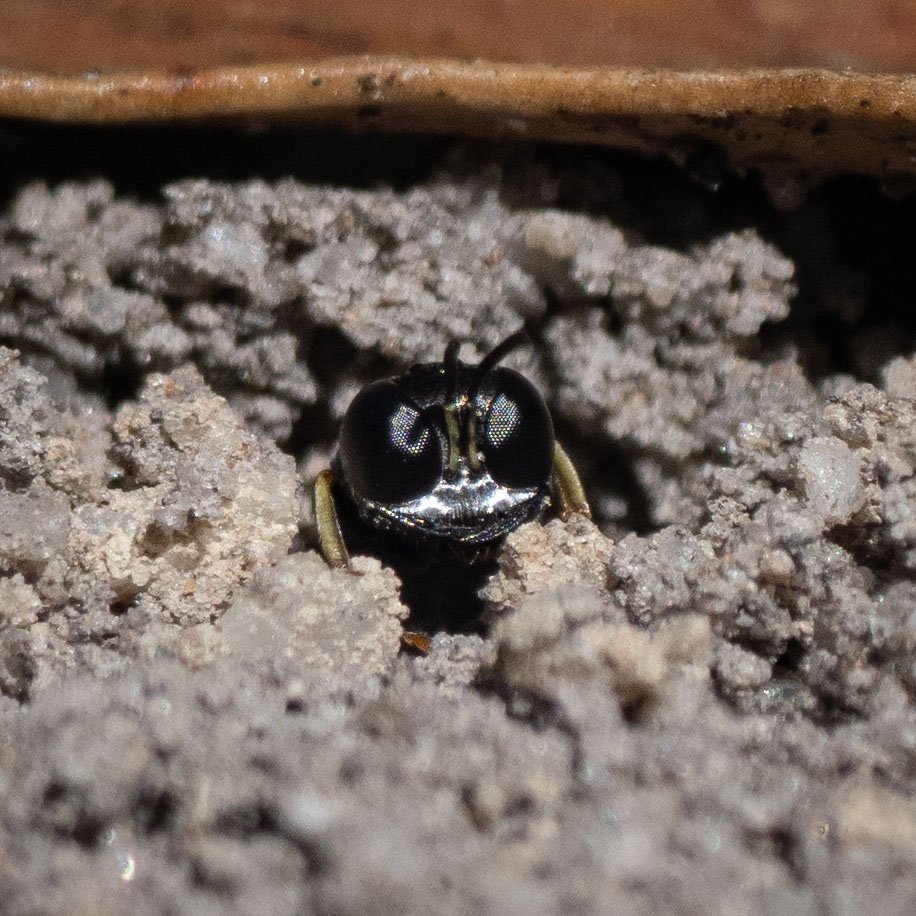
Having recently delivered another fly to her nest, this female spends a few seconds checking for threats before flying off to hunt again.
(11th Sept, 2022)

The entry hole to the nest is just 2mm in diameter … which means the female’s body must be less than 2mm wide.
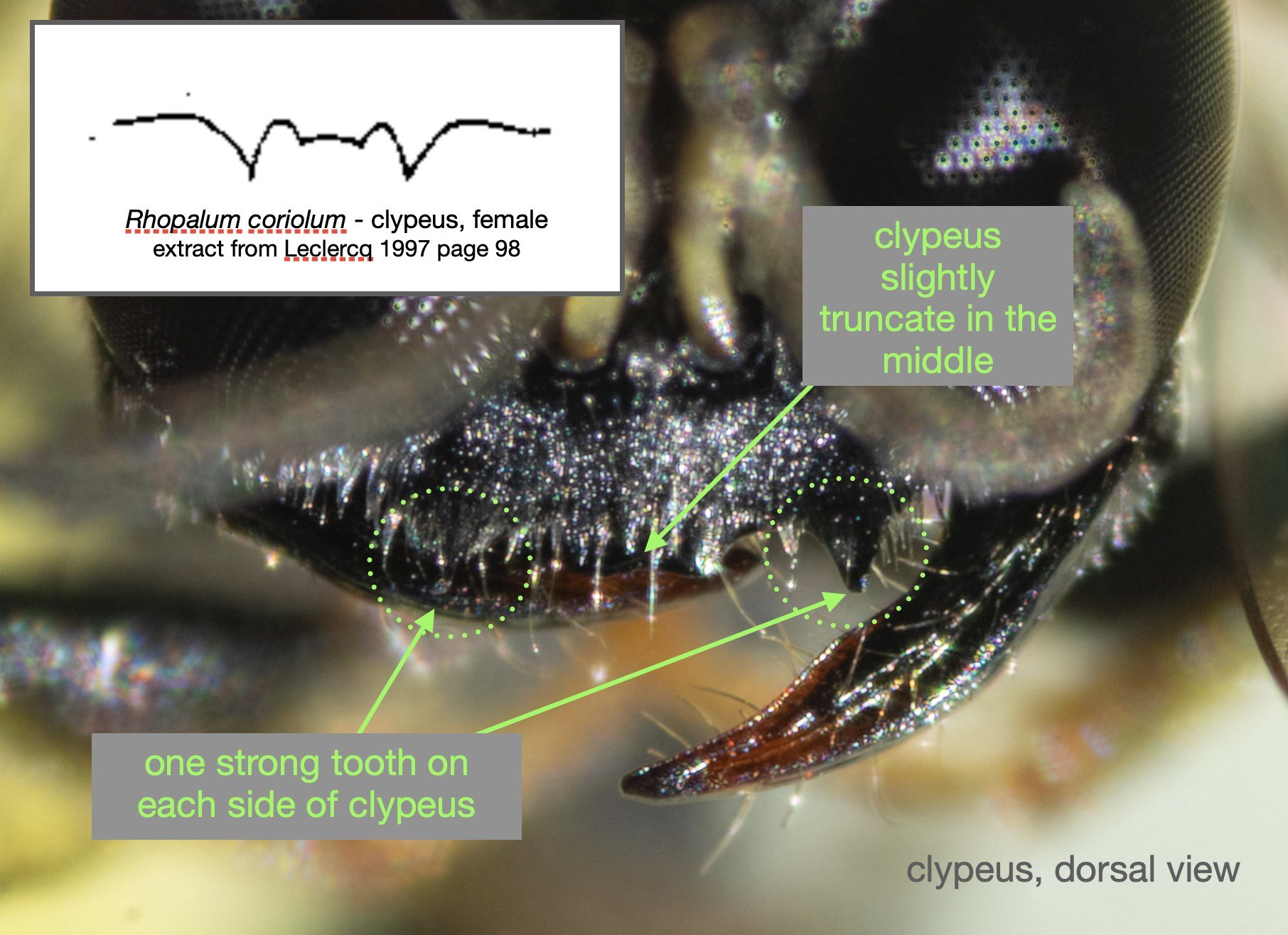
clypeus shape
Rhopalum coriolum

mandible colour, occipital spine & antennal space
Rhopalum coriolum
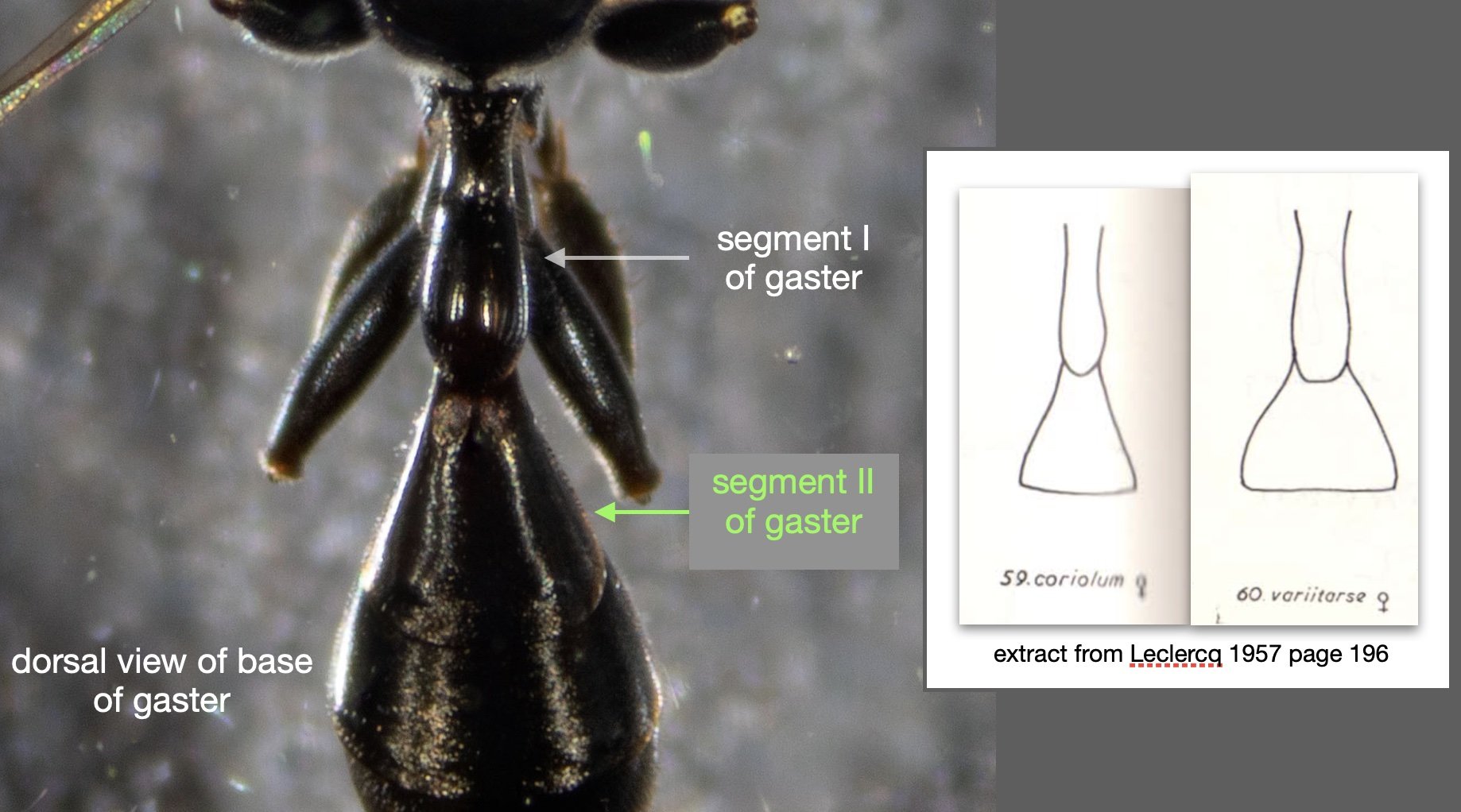
shape of gaster
Rhopalum coriolum
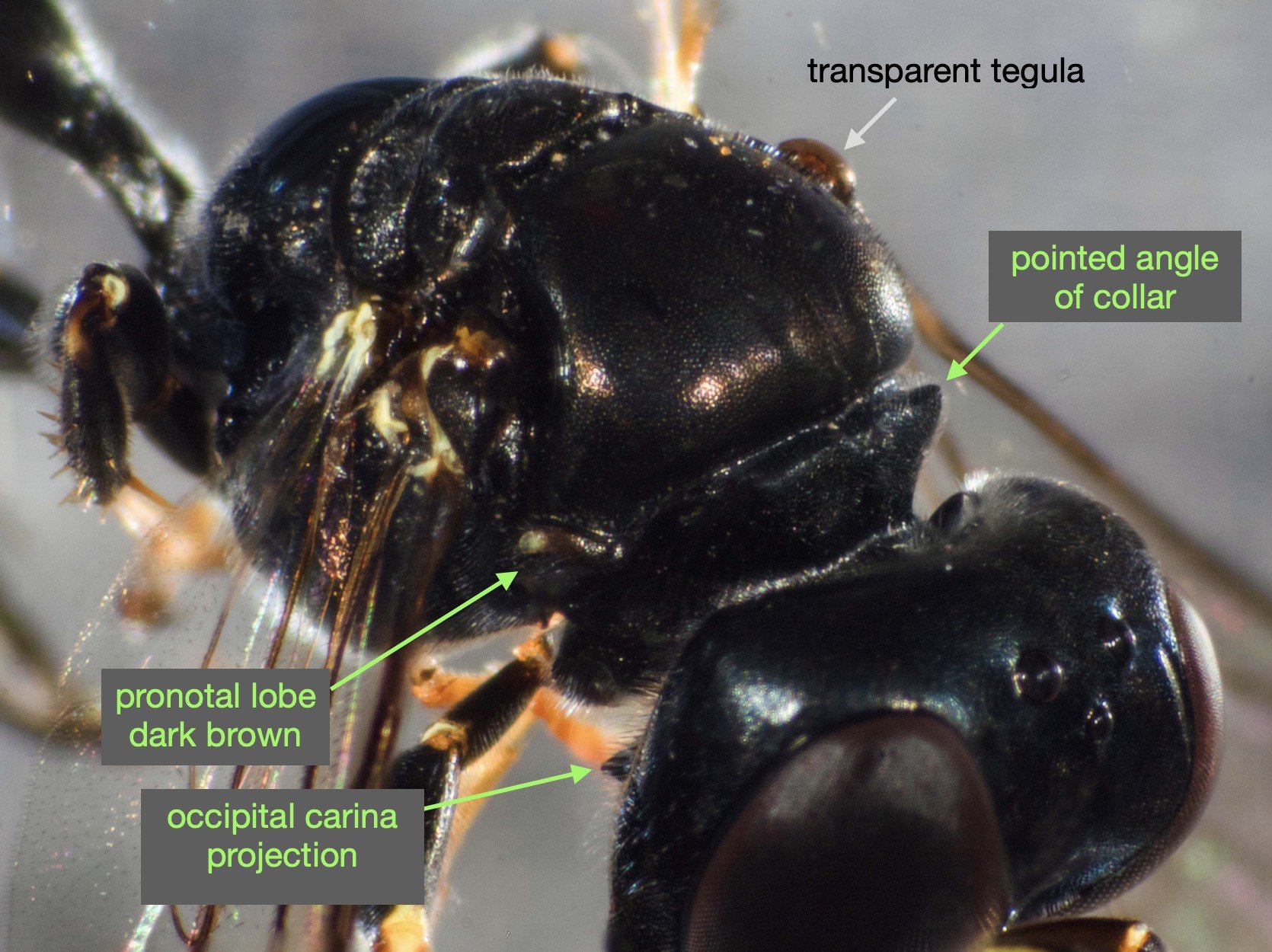
shape & colour of pronotum
Rhopalum coriolum

Rhopalum coriolum
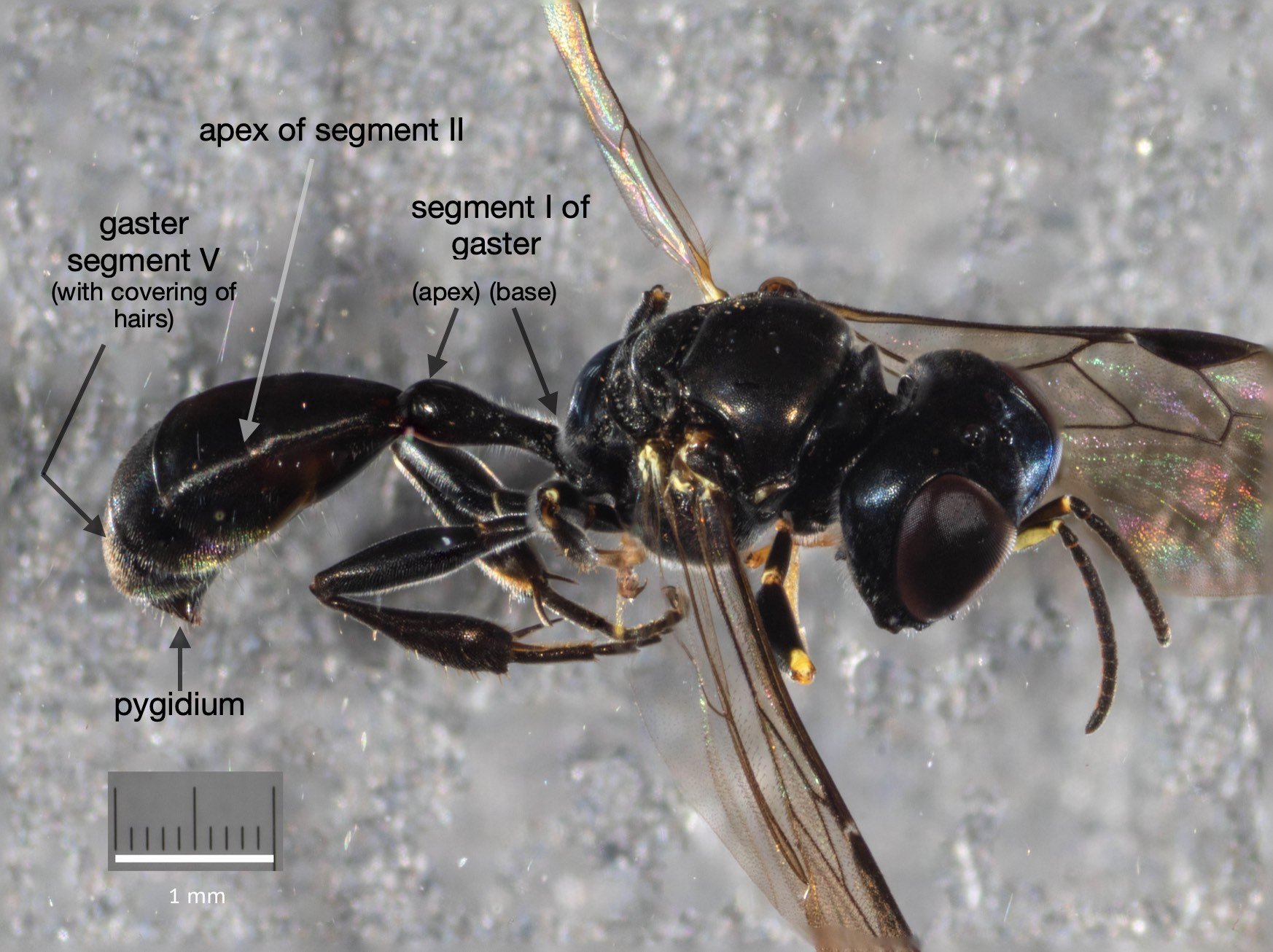
Rhopalum coriolum

Rhopalum coriolum
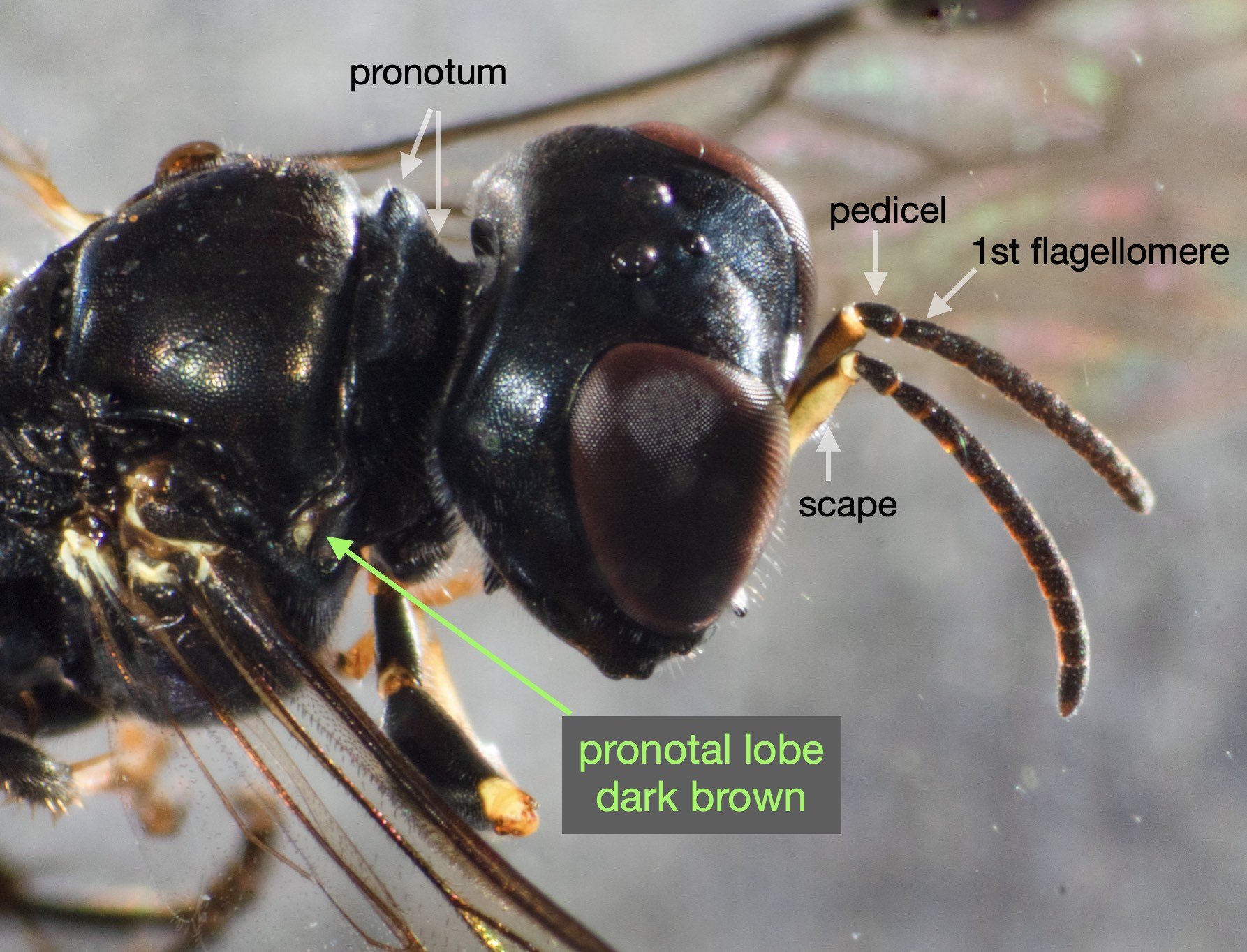
Rhopalum coriolum
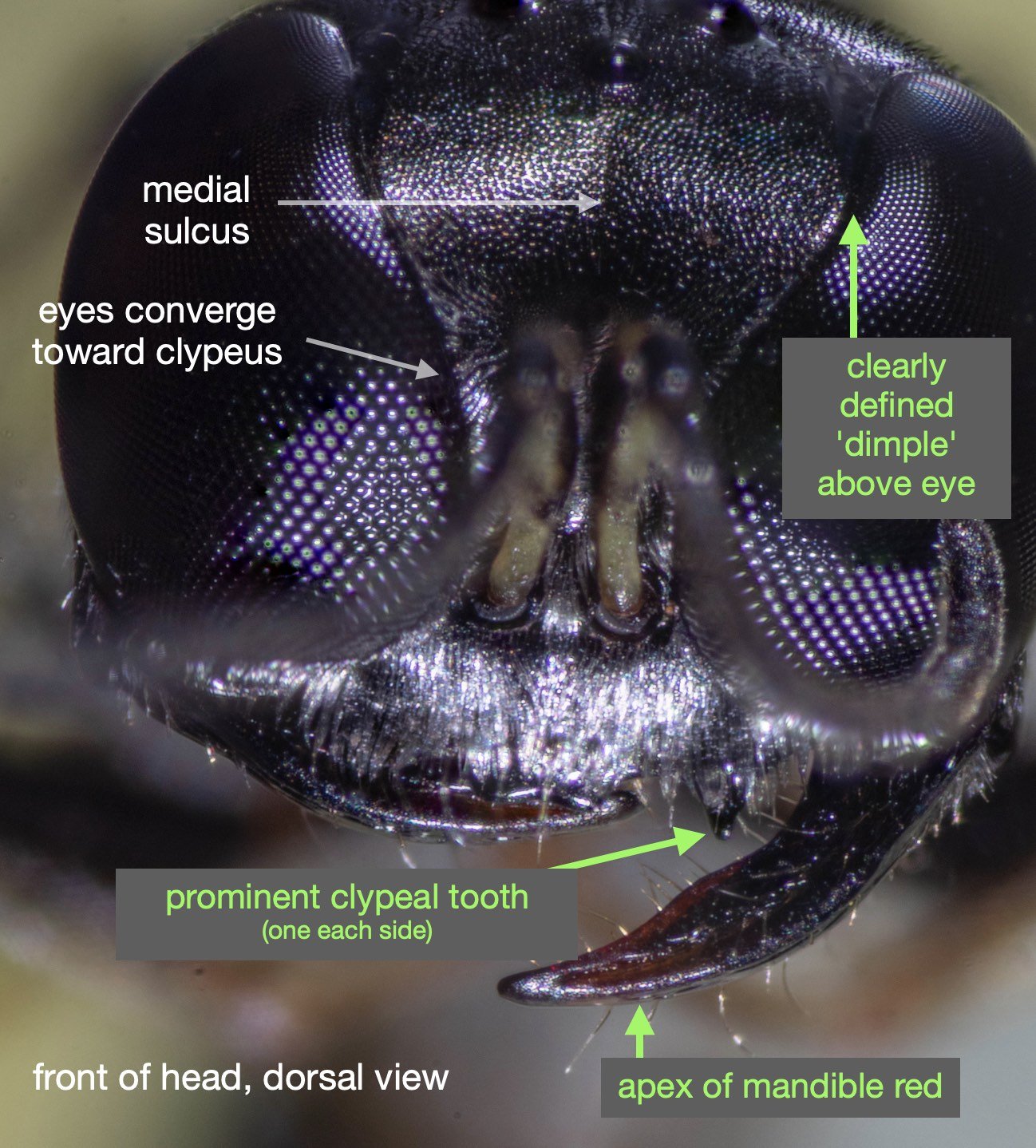
Rhopalum coriolum

Rhopalum coriolum
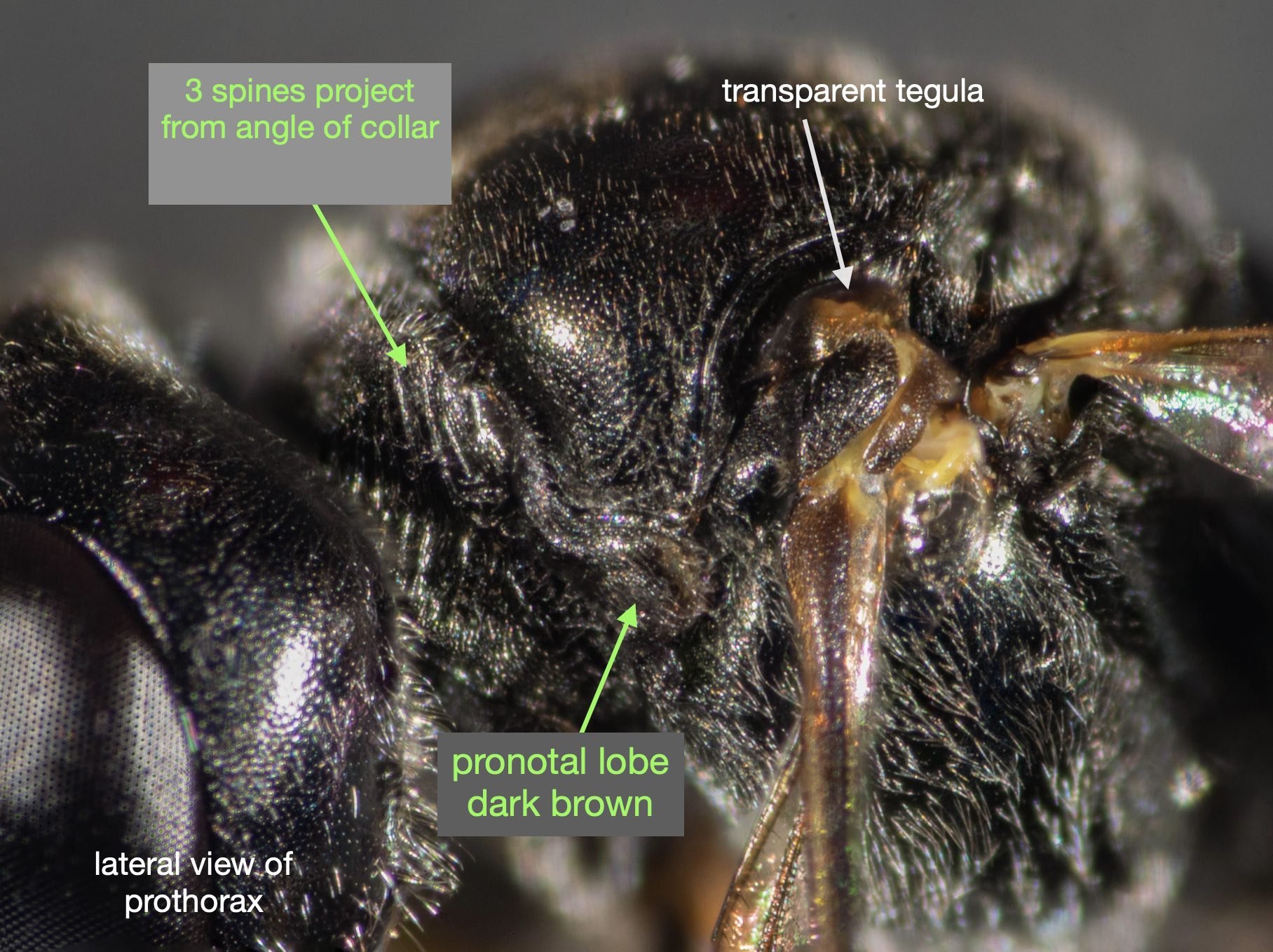
Rhopalum coriolum
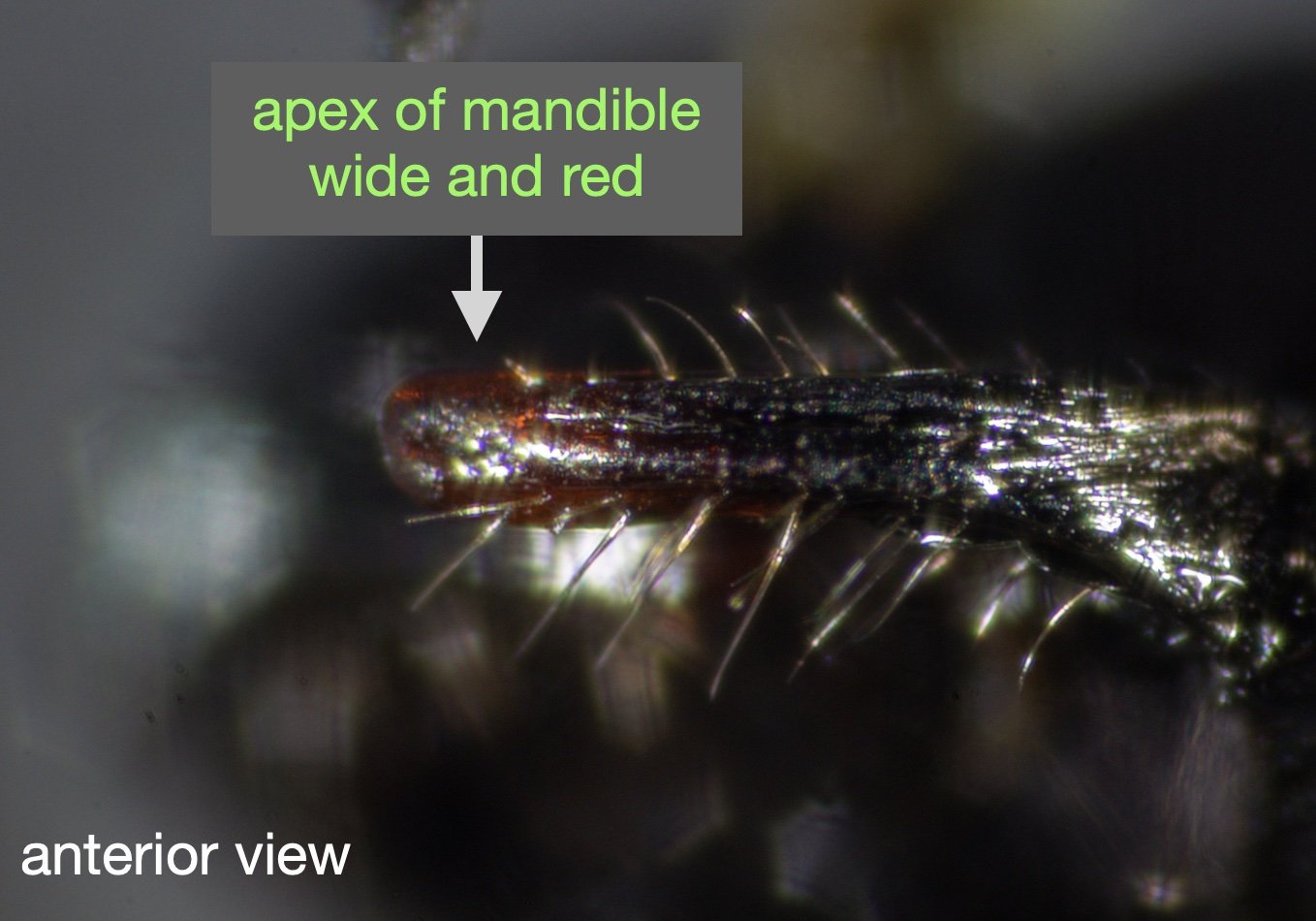
Rhopalum coriolum
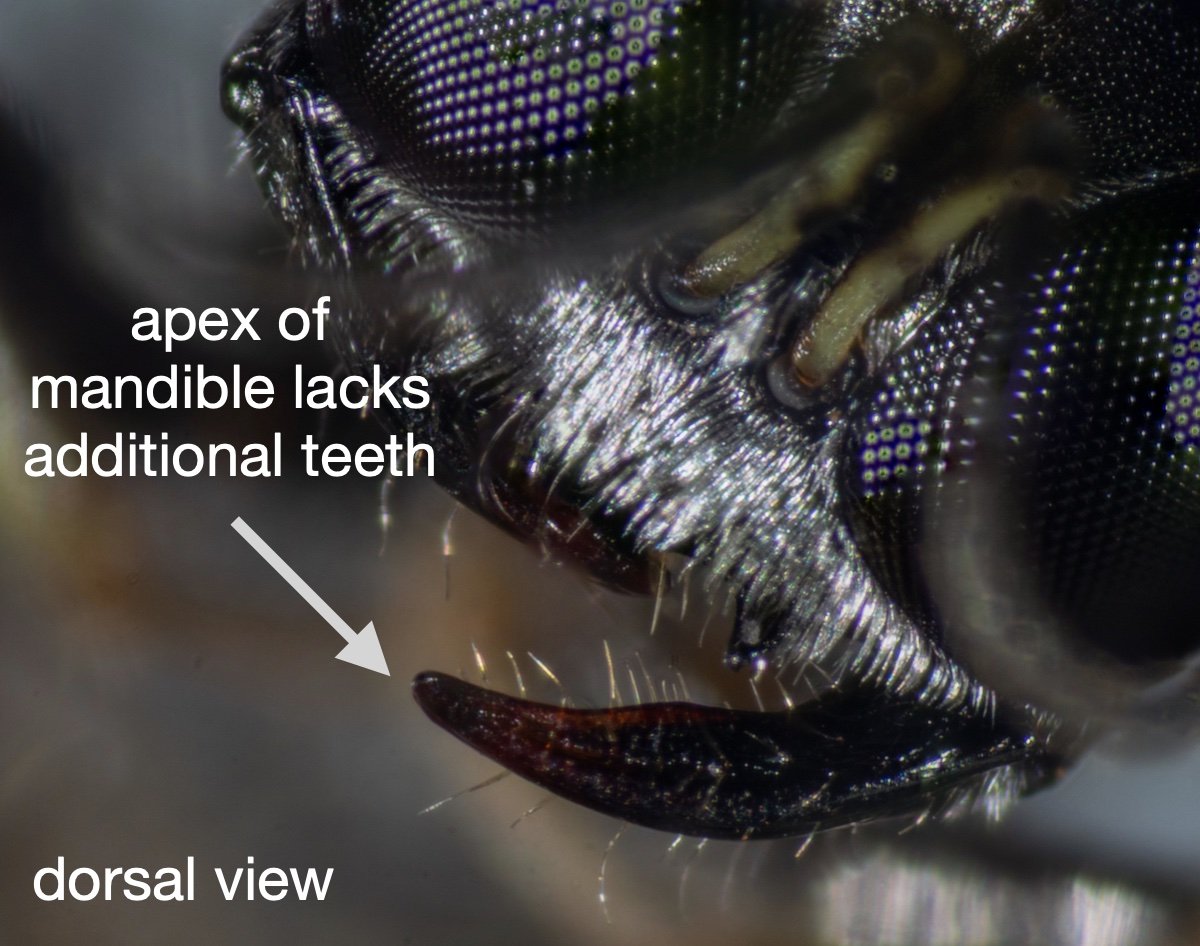
Rhopalum coriolum
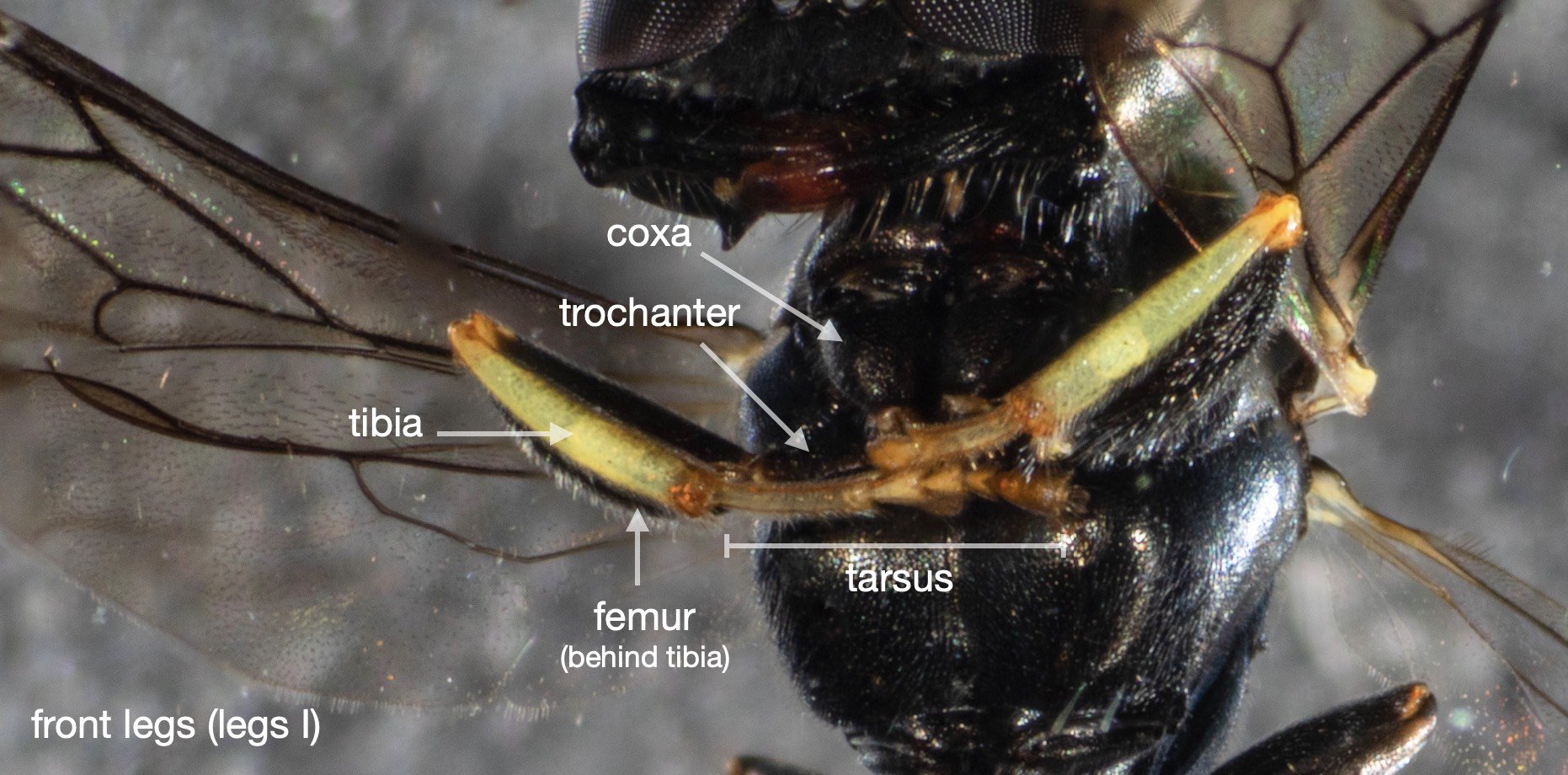
Rhopalum coriolum

Rhopalum coriolum
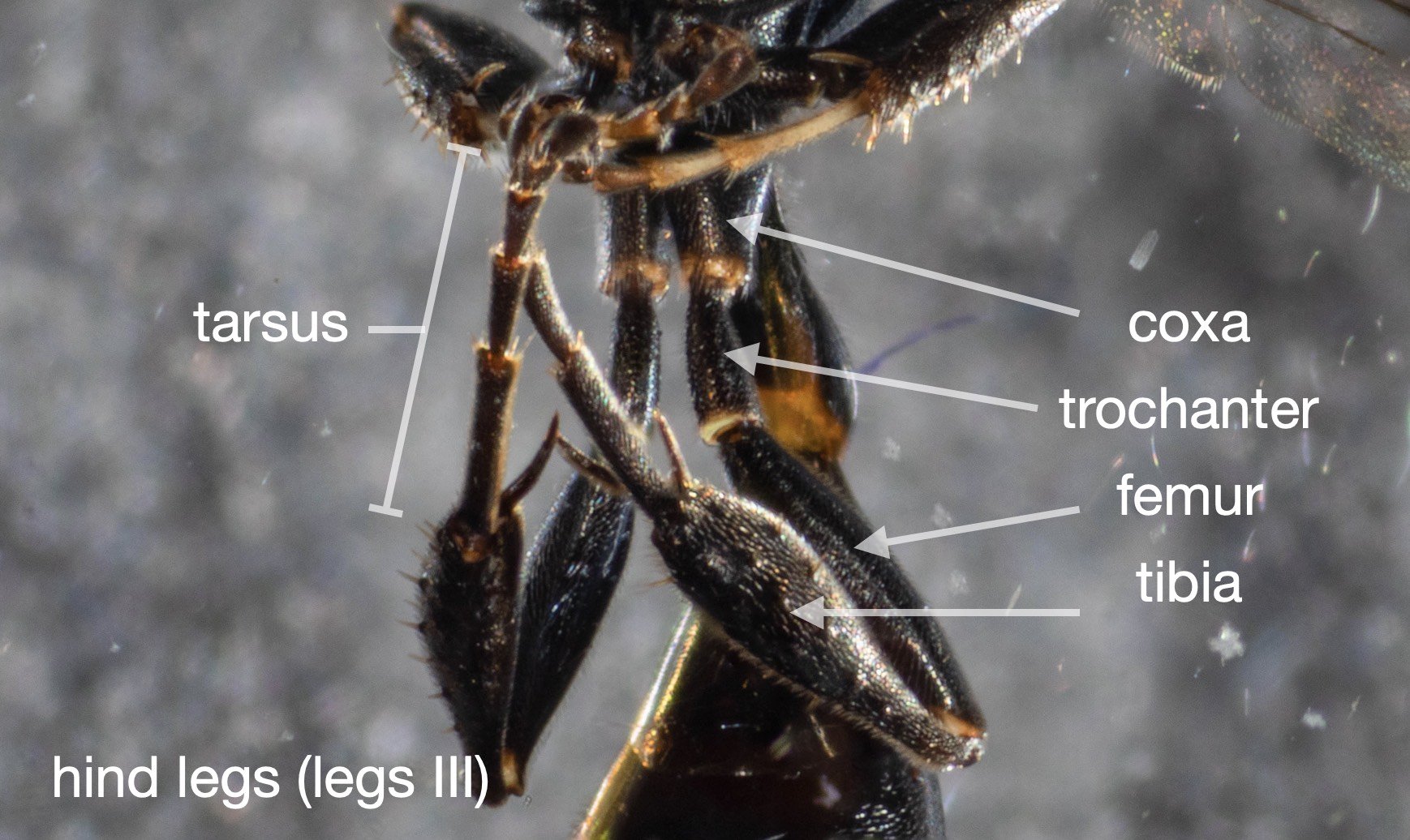
Rhopalum coriolum
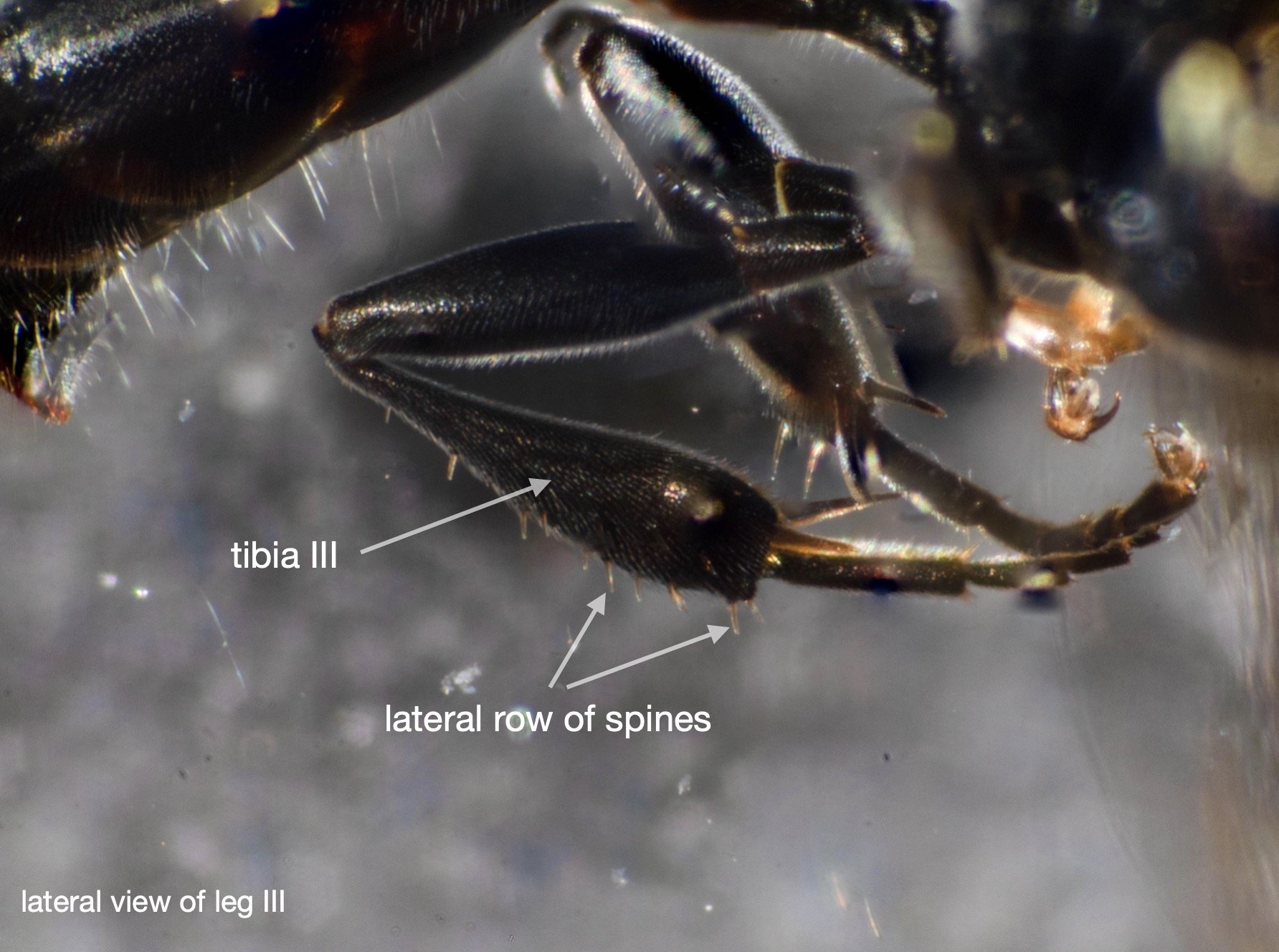
Rhopalum coriolum
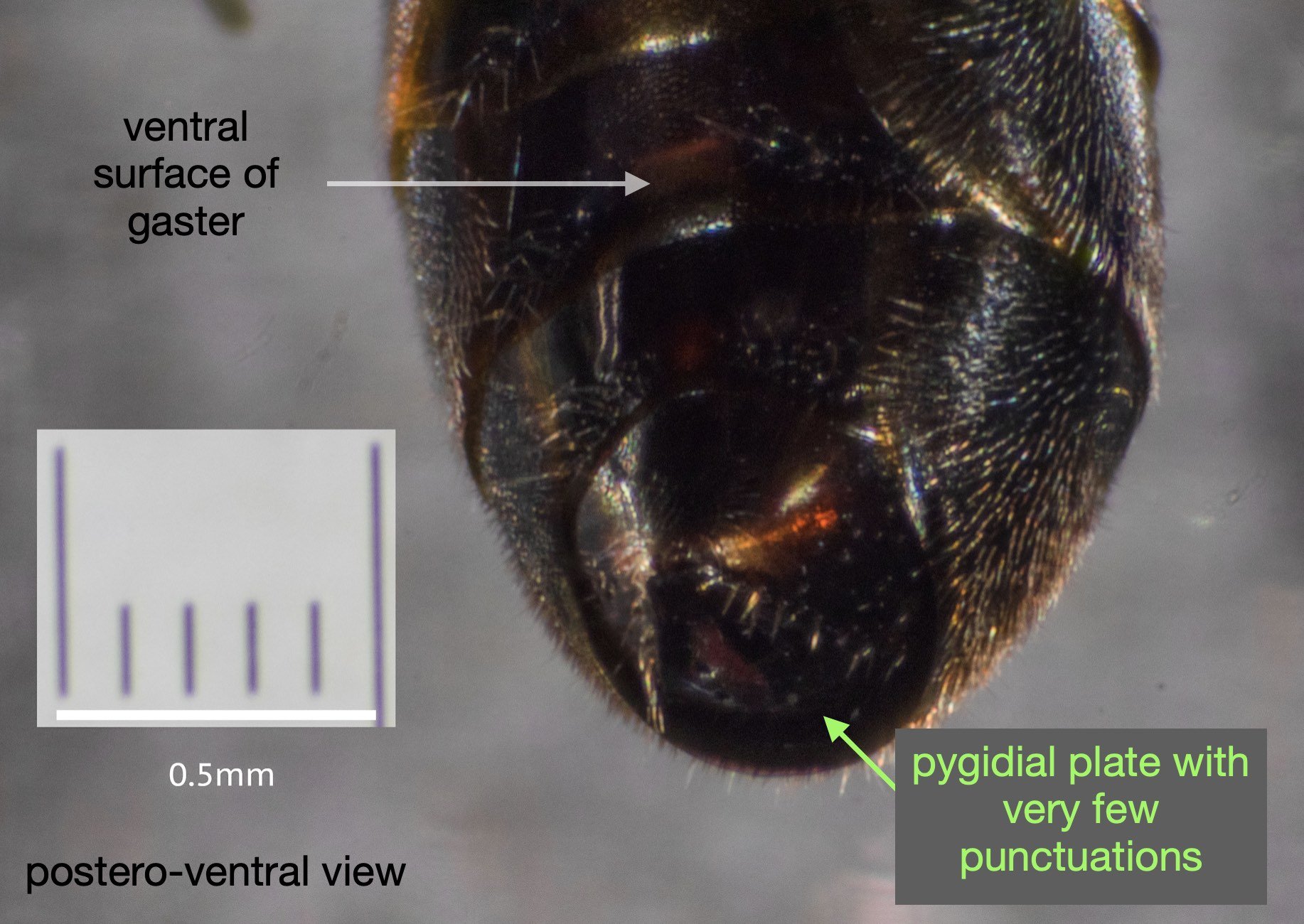
Rhopalum coriolum

































